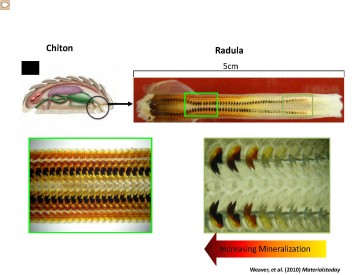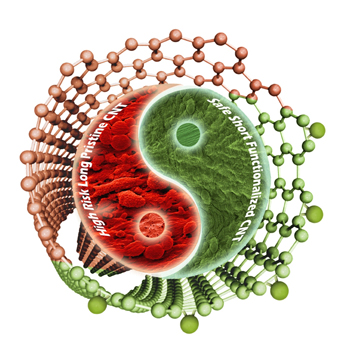The Federal Government of Canada in the guise of the Canada Foundation for Innovation has just awarded $7.7M to Simon Fraser University (SFU) and its partners for a global innovation hub. From the Jan. 15, 2013 Canada Foundation for Innovation news release,
British Columbia’s research-intensive universities are coming together to create a global hub for materials science and engineering. Simon Fraser University, the University of Victoria, the University of British Columbia and the British Columbia Institute of Technology have received $7.7 million in funding from the Canada Foundation of Innovation to create the Prometheus Project — a research hub for materials science and engineering innovation and commercialization.
“Our goal with the Prometheus Project is to turn our world-class research capacity into jobs and growth for the people of British Columbia,” said Neil Branda, Canada Research Chair in Materials Science at Simon Fraser University and leader of the Prometheus Project. “We know that materials science is changing the way we create energy and fight disease. We think it can also help B.C.’s economy evolve.”
This project builds on a strong collective legacy of collaborating with industry. Researchers involved in the Prometheus Project have created 13 spin-off companies, filed 67 patents and have generated 243 new processes and products. [emphasis mine] Branda himself has founded a company called Switch Materials that seizes the power of advanced chemistry to create smarter and more efficient window coatings.
This funding will allow members of the research team to build their capacity in fabrication, device testing and advanced manufacturing, ensuring that they have the resources and expertise they need to compete globally.
There’s a bit more information about the Prometheus project in a Jan.15, 2013 backgrounder supplied by SFU,
Led by Neil Branda, a Canada Research Chair in Materials Science and SFU chemistry professor, The Prometheus Project is destined to become a research hub for materials science and engineering innovation, and commercialization globally.
It brings together 10 principal researchers, including Branda, co-founder of SFU’s 4D LABS (a materials research facility with capabilities at the nanoscale], and 20 other scientists at SFU, University of British Columbia, the University of Victoria and the British Columbia Institute of Technology. They will create new materials science and engineering (MS&E) technology innovations, which will trigger and support sustained economic growth by creating, transforming and making obsolete entire industries.
Working with internationally recognized industrial, government, hospital and academic collaborators, scientists at the Prometheus partners’ labs, including 4D LABS, a $40 million materials science research institute, will deliver innovations in three areas. The labs will:
- Develop new solar-industry related materials and devices, including novel organic polymers, nanoparticles, and quantum dots, which will be integrated in low cost, high efficiency solar cell devices. The goal is to create a new generation of efficient solar cells that can compete in terms of cost with non-renewable technologies, surpassing older ones in terms of miniaturization and flexibility.
- Develop miniaturized biosensors that can be used by individuals in clinical settings or at home to allow early detection of disease and treatment monitoring. They will be integrated into flexible electronic skins, allowing health conditions to be monitored in real-time.
- Develop spintronics (magnetic devices) and quantum computing and information devices that will enable new approaches to significantly improve encrypted communication and security in financial transactions.
“This project will allow B.C.’s four most research intensive institutes to collaborate on fundamental materials research projects with a wide range of potential commercial applications,” notes Branda. “By engaging with a large community of industry, government and NGO partners, we will move this research out of the lab and into society to solve current and future challenges in important areas such as energy, health and communications.”
The Prometheus team already has a strong network of potential end users of resulting technologies. It is based on its members’ relationships with many of more than 25 companies in BC commercializing solar, biomedical and quantum computing devices.
Researchers and industries worldwide will be able to access Prometheus’s new capabilities on an open-access basis. [emphasis mine]
There are a few things I’d like to point out (a) 13 spin-off companies? There’s no mention as to whether they were successful, i.e., created jobs or managed a life beyond government funding. (b) Patents as an indicator for innovation? As I’ve noted many, many times that’s a very problematic argument to make. (c) New processes and products? Sounds good but there are no substantiating details. (d) Given the emphasis on commercializing discoveries and business, can I assume that open-access to Prometheus’ capabilities means that anyone willing and able to pay can have access?
In other exciting SFU news which also affects TRIUMF, an additional $1M is being awarded by the Canada Foundation for Innovation to upgrade the ATLAS Tier-1 Data Analysis Centre. From the SFU backgrounder,
Led by Mike Vetterli, a physics professor at SFU and TRIUMF, this project involves collaborating with scientists internationally to upgrade a component of a global network of always-on computing centres. Collectively, they form the Worldwide Large Hadron Collider Computing Grid (WLCG).
The Canadian scientists collaborating with Vetterli on this project are at several research-intensive universities. They include Carleton University, McGill University, University of British Columbia, University of Alberta, University of Toronto, University of Victoria, Université de Montréal, and York University, as well as TRIUMF. It’s Canada’s national lab for particle and nuclear physics research.
The grid, which has 10 Tier-1 centres internationally, is essentially a gigantic storage and processing facility for data collected from the ATLAS experiment. The new CFI funding will enable Vetterli and his research partners to purchase equipment to upgrade the Tier-1 centre at TRIUMF in Vancouver, where the equipment will remain.
ATLAS is a multi-purpose particle detector inside a massive atom-smashing collider housed at CERN, the world’s leading laboratory for particle physics in Geneva, Switzerland.
More than 3,000 scientists internationally, including Vetterli and many others at SFU, use ATLAS to conduct experiments aimed at furthering global understanding of how the universe was physically formed and operates.
The detector’s fame for being a window into nature’s true inner workings was redoubled last year. It helped scientists, including Vetterli and others at SFU, discover a particle that has properties consistent with the Higgs boson.
Peter Higgs, a Scottish physicist, and other scientists theorized in 1964 about the existence of the long-sought-after particle that is central to the mechanism that gives subatomic particles their mass.
Scientists now need to upgrade the WLCG to accommodate the massive volume of data they’re reviewing to confirm that the newly discovered particle is the Higgs boson. If it is, it will revolutionize the way we see mass in physics.
“This project will enable Canadian scientists to continue to play a leading role in ATLAS physics analysis projects such as the Higgs boson discovery,” says Vetterli. “Much more work and data are required to learn more about the Higgs-like particle and show that it is indeed the missing link to our understanding of the fundamental structure of matter.
There is one more Canada Foundation for Innovation grant to be announced here, it’s a $1.6M grant for research that will be performed at TRIUMF, according to the Jan. 13, 2013 news release from St. Mary’s University (Halifax, Nova Scotia),
Dr. Rituparna Kanungo’s newest research collaboration has some lofty goals: improve cancer research, stimulate the manufacturing of high-tech Canadian-made instrumentation and help explain the origin of the cosmos.
The Saint Mary’s nuclear physicist’s goal moved one step closer to reality today when the federal government announced $1.6 million in support for an advanced research facility that will allow her to recreate, purify, and condition rare isotopes that haven’t existed on the planet for millions of years.
The federal fiscal support from the Canada Foundation for Innovation together with additional provincial and private sector investment will allow the $4.5 million project to be operational in 2015.
“The facility will dramatically advance Canada’s capabilities for isolating, purifying, and studying short-lived isotopes that hold the key not only for understanding the rules that govern the basic ingredients of our everyday lives but also for crafting new therapies that could target and annihilate cancers cell-by-cell within the human body, “ said Dr Kanungo.
The CANadian Rare-isotope facility with Electron-Beam ion source (CANREB) project is led by Saint Mary’s University partnering with the University of Manitoba and Advanced Applied Physics Solutions, Inc. in collaboration with the University of British Columbia, the University of Guelph, Simon Fraser University, and TRIUMF. TRIUMF is Canada’s national laboratory for particle and nuclear physics. It is owned and operated as a joint venture by a consortium of Canadian universities that includes Saint Mary’s University.
…
As one of the nation’s top nuclear researchers (she was one of only two Canadians invited to speak at a Nobel Symposium last June about exotic isotopes), Dr. Kanungo has been conducting research at the TRIUMF facility for many years, carrying out analyses from her office at Saint Mary’s University together with teams of students. Her students also often spend semesters at the Vancouver facility.
As the project leader for the new initiative, she said TRIUMF is the ideal location because of its world leading isotope-production capabilities and its ability to produce clean, precise, controlled beams of selected exotic isotopes not readily available anywhere else in the world.
In recent studies in the U.S., some of these isotopes have been shown to have dramatic impact in treating types of cancer, by delivering radioactive payloads directly to the cancerous cells. Canada’s mastery of the technology to isolate, study, and control these isotopes will change the course of healthcare.
An integral part of the project is the creation of a new generation of high resolution spectrometer using precision magnets. Advanced Cyclotron Systems, Inc. a company in British Columbia, has been selected for the work with the hope that the expertise it develops during the venture will empower it to design and build precision-magnet technology products for cutting-edge projects all around the world.
Exciting stuff although it does seem odd that the federal government is spreading largesse when there’s no election in sight. In any case, bravo!
There’s one last piece of news, TRIUMF is welcoming a new member to its board, from its Jan. 14, 2013 news release,
Dr. Sylvain Lévesque, Vice-President of Corporate Strategy at Bombardier Inc., a world-leading manufacturer of innovative transportation solutions, has joined the Board of Management for TRIUMF, Canada’s national laboratory for particle and nuclear physics, for a three-year term. Owned and operated by a consortium of 17 Canadian universities with core operating funds administered via a contribution agreement through National Research Council Canada, TRIUMF is guided by a Board that includes university vice-presidents of research, prestigious scientists, and leading members of Canada’s private sector.
Paul Young, Chair of TRIUMF’s Board and Vice President, Research at the University of Toronto, said, “We welcome the participation of Sylvain and his extensive experience at Bombardier. TRIUMF is a national resource for basic research and yet we also fulfill a technological innovation mission for Canada. Dr. Lévesque will be a valuable addition to the Board.”
Dr. Sylvain Lévesque earned his Ph.D. from MIT in Engineering and worked at McKinsey & Company before joining Bombardier in 1999. He brings deep experience with large, technical organizations and a passion for science and engineering. [emphasis mine] He said, “I am excited to work more closely with TRIUMF. It has a track record of excellence and I am eager to provide guidance on where Canada’s industrial sector might draw greater strength from the laboratory.”
TRIUMF’s Board of Management reflects the unique status of TRIUMF, a laboratory operating for more than forty years as a joint venture from Canada’s leading research universities. The consortium includes universities from Halifax to Victoria.
Is deep experience like wide experience or is it a whole new kind of experience helpful for ‘getting one’s groove on’? For anyone who’s curious, ‘getting one’s groove on’ involves dancing.


![Flail-Klassischer-Flegel (Deutsch: Ein mit einem Lederriemen verzierter klassischer Flegel mit kugelförmigem Kopf und Kette als Faustriemen) Credit: Tim Avatar Bartel [downloaded from: http://en.wikipedia.org/wiki/File:Klassischer-Flegel.jpg]](http://www.frogheart.ca/wp-content/uploads/2013/01/Flail-Klassischer-Flegel.jpg)
